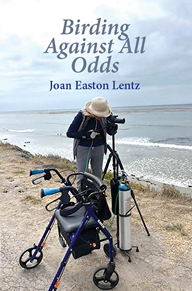THE HIKE TO FORTY-NINE PALMS OASIS
The passage below is from my Nature Journal from APRIL 1, 1987.
Late in the day, I began hiking the dusty, rocky trail over the ridge to Forty-nine Palms oasis. The sun was beginning to get low over the jutting rocks of the barren mountainsides, but I was sure the oasis could be reached before nightfall.
The narrow canyon walls closed in. Creosote bushes, saltbushes, and every manner of gray, thorny shrub dotted the hillsides of this winding canyon. Most spectacular were the fat barrel cacti. Thick and robust, they thrust their plump forms entwined in curved spines from beside the trail. Their rusty color and cylindrical shape gave an ominous touch to the surroundings, as the canyon wound deeper and deeper into the mountains.
The afternoon sun had long since left the steep rock walls, but I pushed on, a feeling of anticipation in every step.
At last, from a far-off cul-de-sac in the chalky cliffs, the green, fan-shaped fronds of the tall, native palms–an incongruous green here–rose into view. Aware of the oncoming darkness, I hurried faster.
Up and down the sandy escarpments and pebbled ledges I ran. The fan palms loomed ever closer in the dusky light, guarding the water oozing out of the ground beneath them.
Finally, the sound of water trickling over rocks met my ears.
With no warning, the oasis emerged around the next corner. The nearby wasted hillsides, where struggled the typical desert plants, gave no clue to a thirsty, weary traveler that rest and liquid refreshment was imminent.
Nature here is full of surprises, supreme in the ability to keep you guessing. You begin to think you can read the landscape of this arid country, but the more you think you know, the more inscrutable the desert becomes.
Distances are deceptive, too. After twice the estimated time to reach the oasis, I finally stood in the twilight near the towering palms. Their untrimmed, long blond skirts rustled in the breeze.
A low whistle caught my ear and I turned around.
“Whew!” Again, the low whistle came, so human in its utterance that a cold chill began to creep up my spine. Four people had been hiking out as I came in. Was somebody left behind, hiding?
Then, a coal-black bird with white flashes in its wings flew right over my head and landed in a cluster of mistletoe covered with red berries. The bird began feeding–a final morsel for the evening–and at last I discerned the curved top-knot and the blood-red eye of the Phainopepla. A glossy black male, soon joined by the female in her all-gray garb, was giving his quiet whistle, an ever-present sound in our Southwestern deserts.
This Phainopepla pair seemed to assume the role of guardians of the oasis. Perhaps their fluttering, graceful flight and inimitable presence would protect the wild spirit of the oasis from civilization.
The trickle of life-giving water flowing out of the rocks at my feet created two shallow pools. Birds were flying back and forth everywhere. The onset of evening had hastened their search for a resting spot for the night, a drink and a bath. Besides the desert-dwelling birds, such as the tiny Costa’s Hummingbirds, the Verdins and the beautiful Hooded Orioles, a sprinkling of migrant birds appeared. Marking this green oasis from high up in the sky and knowing it spelled relief from the heat and parched landscape all round, the birds must have alighted just before dusk.
An Ash-throated Flycatcher, Townsend’s Solitaire, Black-throated Gray Warbler, Common Yellowthroat, Wilson’s Warbler and White-crowned Sparrow, unlikely birds in this desert habitat, were perching in the low shrubs which clung to the rocks. From here the birds descended to bathe and drink.
Gazing at the tiny, bright warblers, I reflected on the distances they might have flown that day. How many barren, treeless miles had they crossed? In the waning light, they preened and drank in the shelter of the welcoming palms. A thin slice of moon rose above the bleak canyon walls.
Lulled by the soothing sound of the running water and the sight of the birds, all sense of time was suspended. But, realizing I was alone, and without food or flashlight, I goaded myself into making the journey back.
As I scrambled over the rocks and climbed away from the greenery, the low hoot of a Great Horned Owl uttered a lone farewell. Even the Phainopeplas were silent now.
Up and up and twisting and turning, the trail led homeward. An inadvertent slip of my hiking boot could send me headlong into any one of those well-placed barrel cactus.
Nearing the end, the view out over the desert spread to the horizon. Lights twinkled from the towns and ranches, but they were almost lost in the vast space. Forever, the gentle skirts of pale gravel drifted down from volcanic peaks. Forever, the miles lay across the Mojave, now bathed in near-darkness. I looked north towards Death Valley, and thought of the early settlers and their ordeals.
There are still places to go where the desert’s spell lingers. . .
The hike to Forty-nine Palms oasis is one of them.

